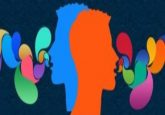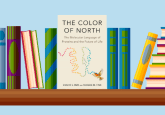Debunking misinformation during a pandemic through storytelling

Just when we all thought COVID-19 cases were decreasing worldwide, the importance of science communication and access to reliable sources continues to take the stage as a key player in the battle against an emerging virus.
Most of us are quite familiar with books and movies based on zombies and apocalyptic scenarios with stories that often originate as an ‘oopsie’ by an untrustworthy scientist. These narratives are classic examples within the horror and science fiction genres that feed our admiration for the obscure and the unknown. As such, it is not surprising to notice a sensationalism for similar hypothetical schemes during a real-life pandemic in the form of “conspiracy theories”. Now more than ever, scientists and medical professionals can appreciate the many challenges and obstacles that intervene with their efforts in delivering evidence-based science to the public. But why are these conspiracy theories so appealing and hard to quieten? Because they are based on a story. Let’s face it: whether the narrative is real or not, we all love a good story. Our success as a species has largely depended on our ability to communicate experiences that oftentimes combine with our imagination and expand the limits of what we can directly demonstrate to be the truth. The use of storytelling is unique to humans and the sense of unveiling an obscure possibility has attracted our creativity and inspired the fine arts for centuries. Even if inaccurate, a plausible plot drives our imagination into a world full of illusions and possibilities that can make a story immortal.
We now have witnessed how a single emerging pathogen can negatively affect virtually every aspect of our lives well beyond its effects on human health. While it may seem like we are simply potential hosts in this bizarre ongoing plot, we cannot undermine the power of communication in the collective survival of our species. Conspiracy theorists are not the only storytellers here: we are, too. We routinely share our discoveries in scientific symposiums, peer-reviewed articles, and lectures – to name a few. The dissemination of science is a key component of the scientific method and it is indispensable for the growth of disciplines. Unfortunately, many of the communication venues traditionally used to communicate results are directed to experts in the field. To this day, the use of highly technical language continues to challenge the effectiveness of communication between experts and the average audience.
 Breaking the silence: talking about mental health in graduate education
Breaking the silence: talking about mental health in graduate education
Efraín E. Rivera Serrano, PhD, discusses his encounters with mental health issues while enrolled in his PhD, how he addressed them, and the lessons he learned from his experiences.
The outcomes of scientific development are global and impact all of us. We have the intrinsic responsibility to ensure that the public is exposed to evidence-based and accessible information. The massive infiltration of misinformation during this pandemic and the resulting negative consequences has proven that simply ignoring such claims is not a feasible option. Overlooking false claims can allow the imaginary perception of someone’s thrilling narrative to become the reality of their audience. As a virologist, I have a societal role in ensuring that correct information reaches my audience and it is successfully decoded. I am sharing here some prompts to consider when trying to fight misinformation:
- Take advantage of your inherent credibility. We tend to unquestionably believe those close to us and they tend to immediately believe in our claims, too. Use that inherent credibility for the benefit of society by first educating those around you and encouraging them to do the same with their circle. Find the right balance between factual transparency and exposure of your human side to foster conversations and avoid a one-way lecture. In times when the ever-evolving nature of science is exposed and used against its credibility, remind others that uncertainty in science is a positive trait that drives its growth.
- Share stories. Conspiracy theories are based on obscure stories that feed our craving for secrecy and desire to challenge our imagination. The same approach is an effective tool in science communication; and science itself is a discipline full of creativity. Rather than presenting a list of facts and technical evidence, consider packaging that same information in as an interesting and timeless story that engages your audience. Invite your audience to dive into the roots of scientific discovery and an appreciation for the yet unknown.
- Your audience is your priority. Sometimes frustration takes over when trying to continuously fight claims when the evidence seems obvious to us. Remember that not all of us share the same degree of background in a discipline and acknowledge that we are all experiencing similar emotions. Demonstrate empathy, try to recognize their point of view, and use a welcoming tone when inviting them to listen to your story.
- Exploit your strengths. Virtually anyone with access to internet can follow the latest news and find immediate answers to their queries. Diverse streams, such as social media and video-sharing platforms, have provided accessible means for the exchange of information. Unfortunately, these are also a common source of misinformation. Use your strengths and personality to find the appropriate venue(s) to elevate your voice. Storytelling does not have to be confined to one stream and you can exploit, for example, your writing skills or your passion to be in front of the camera.
- Know your limitations. We are all experiencing an event that will forever shape history. Many of us are overwhelmed with information and an array of emotions. Choose wisely the flames you want to extinguish and do not be afraid to request help from more suitable sources. Keep in mind that it is not the time to over-inflate information, extrapolate ideas, or make guesses based on our own biases. Our words and tone cannot only impact our credibility as scientists, but also how science is perceived.
The progression of every story follows the classic narrative arc. We have now seen the beginning and are currently experiencing the middle phases of the plot. Thanks to the internet, scientists are no longer in a vacuum chanting to the void and we can all be supporting actors in determining how this story will be resolved. We cannot stop the emergence of misinformation and conspiracy theories, but we do have the tools to defeat them with evidence-based science and effective communication. The combination of these can drive people’s empowerment to make informed decisions and even inspire them to further echo scientific facts to their own audience.
 Efraín Rivera-Serrano, PhD, is a Research Associate in the Department of Microbiology and Immunology at the University of North Carolina at Chapel Hill (USA). He uses social media to communicate science (@NakedCapsid on Twitter) and facilitates workshops on science communication.
Efraín Rivera-Serrano, PhD, is a Research Associate in the Department of Microbiology and Immunology at the University of North Carolina at Chapel Hill (USA). He uses social media to communicate science (@NakedCapsid on Twitter) and facilitates workshops on science communication.





